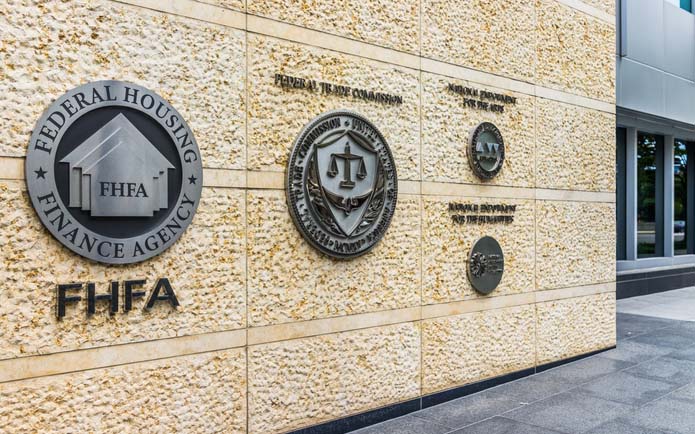Foreclosure ban pushes mortgage defaults, repossessions to lowest level in over 15 years
January 25-31, 2021
By Wesley Brown
Arkansas ranks among the top two states with the largest decline in foreclosures as the federal moratorium bank has brought most bank repossessions and defaults to a halt, according to new industry data Irvine, Calif.-based Attom Data Solutions.
The yearly report by the Irvine, Calif.-based foreclosure listings portal also shows that property seizures and defaults fell to their lowest level in more than 15 years as current federal moratoriums set to expire at the end of this month have now been extended through the end of February.
On Jan. 18, the Federal Housing Finance Agency (FHFA) announced that Fannie Mae and Freddie Mac will extend the moratoriums on single-family foreclosures and real estate owned (REO) evictions until February 28, 2021. It is now set to expire on January 31, 2021, FHFA officials said.
“To keep our communities safe, and families in their homes during the COVID-19 pandemic, FHFA is extending Fannie Mae and Freddie Mac’s foreclosure and eviction moratorium,” said FHFA Director Mark Calabria.
The foreclosure moratorium applies to government-backed, single-family mortgages only, while the REO eviction moratorium applies to properties that have been acquired by Fannie Mae and Freddie Mac through foreclosure or deed-in-lieu of foreclosure transactions.
During the housing financial crisis amid the Great Recession in late 2008, the federal government completed the takeover of Federal National Mortgage Association (Fannie Mae) and Federal Home Loan Mortgage Corporation (Freddie Mac) by placing both government-sponsored enterprises (GSEs) into conservatorship under the U.S. Treasury Department.
The FHFA now regulates Fannie Mae, Freddie Mac and the 11 Federal Home Loan Banks. These GSEs, which both traded publicly as U.S. stocks, provide more than $6.7 trillion in funding for the U.S. mortgage markets and financial institutions. Fannie Mae makes 30-year fixed-rate mortgage and affordable rental housing possible for millions of Americans, while the smaller Freddie Mac was created by the federal government in 1970 to expand the secondary market for mortgages that was monopolized by its bigger sibling.
At the beginning of the COVID-19 pandemic in March 2020, FHFA implemented its nationwide suspension of single-family foreclosures and evictions on mortgages and real estate owned or guaranteed by Fannie Mae and Freddie Mac through Aug. 31. That original moratorium, which applies only to homes owned by Freddie Mac and does not apply to tenants in homes that have not been foreclosed, has been since extended three times.
Today, FHFA projects additional expenses of $1.4 to $2 billion will be borne by the two GSEs due to the existing COVID-19 foreclosure moratorium and its extension. FHFA said it will continue to monitor the effect of the foreclosure and eviction moratorium on borrowers, the Enterprises and their counterparties, and the mortgage market and extend or sunset its policies based on the data and health risk.
During the pandemic, both Fannie Mae and Freddie Mac also offer comprehensive loss mitigation programs for borrowers with eligible hardships. These programs have helped more than 4.5 million families stay in their home and will remain available even when COVID-19 forbearance flexibilities end, official said.
Under the comprehensive loss mitigation programs, qualified borrowers with a financial hardship that affects their ability to pay their mortgage may be eligible for temporary forbearance of up to 12 months, whether their hardship was caused by COVID-19 or not. Qualified borrowers can also obtain loan modifications to assist their ability to resume regular monthly payments once their hardship is resolved.
Backlog building up, ‘tsunami of evictions” ahead
Meanwhile, Attom on Jan. 14 released its year-end 2020 foreclosure market report showing that U.S. foreclosure listing were down to their lowest level since 2005. The foreclosure listing portal shows that 214,323 default notices, scheduled auctions and bank repossessions were reported on U.S. properties in 2020, down 57% in 2019 and down 93% from a peak of nearly 2.9 million in 2010.
Those 214,323 properties with foreclosure filings in 2020 represented 0.16 percent of all U.S. housing units, down from 0.36 percent in 2019 and down from a peak of 2.23 percent in 2010. Attom is the licensor the nation’s most comprehensive foreclosure data and parent company of RealtyTrac.com, an online foreclosure tracking portal.
In the annual industry report, Attom tracked a unique count of properties with a foreclosure filing during the year based on publicly recorded and published foreclosure filings collected in more than 2,200 counties nationwide. The report also includes new data for December 2020, showing there were 10,876 U.S. properties with foreclosure filings, up 8% from the previous month but down 80% from a year ago.
“The government’s moratoria have effectively stopped foreclosure activity on everything but vacant and abandoned properties. There is a backlog of foreclosures building up – loans that were in foreclosure prior to the moratoria; loans that would have defaulted under normal circumstances; and loans whose borrowers are in financial distress due to the pandemic,” said Rick Sharga, executive vice president of RealtyTrac. “While it’s still highly unlikely that we’ll see another wave of foreclosures like the one we had during the Great Recession, we really won’t know how big that backlog is until after the government programs expire.”
Among the foreclosure filings, bank lenders repossessed 50,238 properties through foreclosure (REO) in 2020, down 65% from 2019 and 95% below peak levels of 1,050,500 in 2010. Counter to the national trend, there were metropolitan statistical areas with a population greater than 200,000 that saw a year-over-year increase in REOs. Lenders repossessed 1,972 U.S. properties through completed foreclosures (REOs) in December 2020, down 2% from last month and 86% below the same period in 2019.
Lenders also started the foreclosure process on 131,372 U.S. properties in 2020, 61% below a year ago and down 94% from a peak of 2,139,005 in 2009. That tally is also a new all-time low going back as far as foreclosure starts data is available in 2006.
“The impact of the government foreclosure moratoria and mortgage forbearance programs is nowhere more obvious than in the foreclosure start numbers from 2020. We ended the year with a near-record number of seriously delinquent loans, but historically low levels of foreclosure activity,” Sharga said. “The good news is that the government and mortgage industry succeeded in working together to prevent unnecessary foreclosures; the question remains how many homeowners whose finances have been affected by the pandemic will ultimately default on their loans, and whether the strength of the housing market will help cushion the fallout.”
States that saw declines in foreclosure starts from last year included Oregon (-79%); Arkansas and Kansas (-77%); Nevada (-71%); and Massachusetts (-70%). Counter to the national trend, Idaho saw a slight uptick of 4% from last year. U.S. properties foreclosed in the fourth quarter of 2020 had been in the foreclosure process an average of 857 days, a 3% increase from the previous quarter and from a year ago.
Considering the national foreclosure trend, another industry report by Black Knight Inc. such activity is muted as both privately and public foreclosure bans remain in place. A Dec. 21 report by the Jacksonville, Fla-based real estate data analytics firm shows that while early-stage delinquencies -- borrowers one or two payments past due -- have fallen back below pre-pandemic levels, seriously past-due (90-plus) mortgages remain 1.8 million above pre-pandemic levels,” the report warned.
Ahead of his Jan. 20 inauguration, President Joe Biden also unveiled a $1.9 billion stimulus plan that included extending the eviction ban to Sept. 30 in a bid “to avoid a flood of foreclosure and eviction filings” awaiting courts in the nearly 10 months since the original moratorium went into effect in March 2020.
That plan to extend moratorium on evictions another eight months only creates a larger mess for landlords and tenants, said Richard Kruse, Columbus, Ohio-based distressed asset manager and foreclosure broker/auctioneer.
“In the end, there will be an even bigger tsunami of evictions and foreclosures,” said Kruse, principal of Gryphon USA. “This is a delay in the market unraveling itself and increases the inevitable consequences.”
PHOTO CAPTIONS:
The Federal Housing Finance Agency (FHFA) recently announced that Fannie Mae and Freddie Mac have extended moratoriums on single-family foreclosures and real estate owned (REO) evictions until Feb. 28, 2021.




